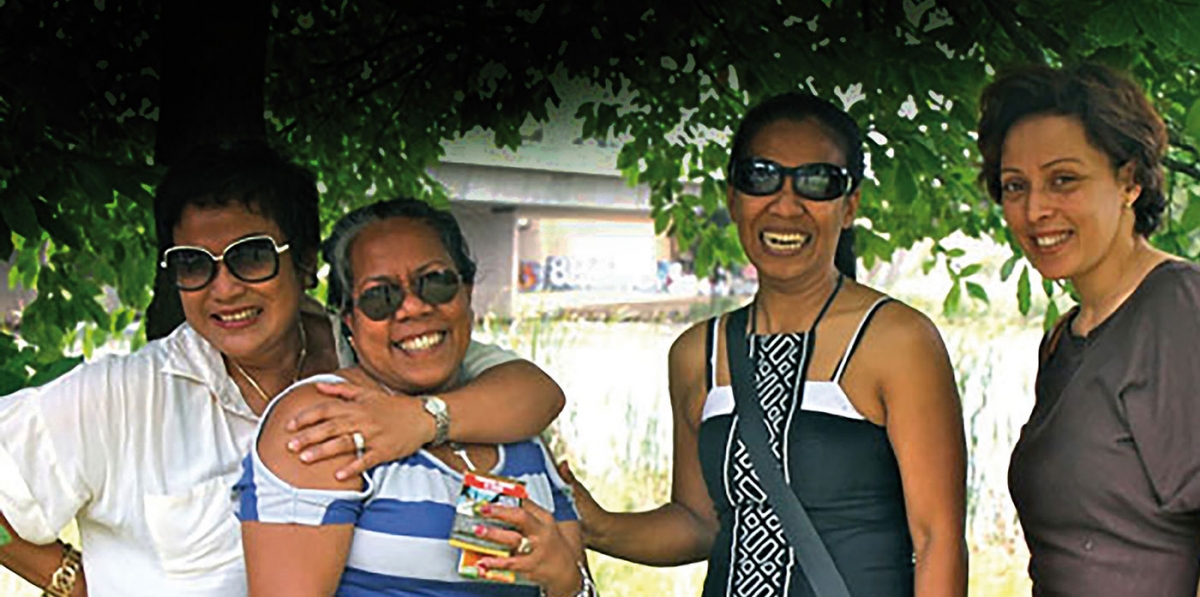Beyond assumptions about the domestic worker and the family in crisis
<p>According to the International Labour Organization’s 2017 ‘Trends for Women’ report, [qtip:1|International Labour Organization. 2017. <em>World Employment and Social Outlook: Trends for women 2017</em>. Available from <a href=\"https://tinyurl.com/trendwom2017\">tinyurl.com/trendwom2017</a>] Indonesia and the Philippines are the top two countries in Southeast Asia from which migrant workers originate. Indonesia recorded 4.5 million migrant workers worldwide, 70% of whom are women. Every year, some 119,000 domestic workers leave Indonesia. In comparison, the Philippines recorded 10.2 million migrant workers worldwide, of whom 80% are women; annually 150,000 domestic workers leave. Philippine and Indonesian migrant women have been the focus of a growing body of literature concerning the feminisation of labour migration from Southeast Asia. These studies have focused on the large numbers of women who migrate out of poor rural areas to undertake domestic work. In addition, the studies typically deal with a ‘family in crisis’ situation where increasing female mobility is affecting basic family structures, such as: decreases in fertility rates, a rise in divorce rates, a heavier burden on caregivers besides the biological mother, and the effect of long distance parenting on children left behind. [qtip:2|Hayami, Y. et al. 2012. <em>The </em><em>Family in Flux in Southeast Asia: Institution, Ideology, Practice</em>. Chiang Mai, Thailand: Silkworm books.]</p>
An international collaborative project in which I am taking part – funded by the Canadian Social Science and Humanities Research Council, and involving researchers from the UK, USA, Canada and Australia – focuses on Southeast Asian women, family and migration in the global era, and addresses a gap in this literature on the feminisation of labour migration. In particular, we counter the assumptions surrounding Philippine and Indonesian female migrants working as maids and nannies. Our research focuses on the intersection of reproduction and migration beyond the emphasis on low skill migration. We do so to unpack the notion of the family in the transnational flow of people and ideas, the mobility regimes affecting women and their families, as well as a global discourse of the ‘good parent’.
A focus of our research is on absent children in the lives of these migrant women. 3 Deirdre McKay looks at how Philippine migrant women working in the health care industry in the UK, might bear their children in the UK in order to confer UK citizenship, but subsequently send them back to the Philippines as toddlers to be brought up by their extended family. These women believe that their children will grow up in a better environment in the Philippines. Later, as UK citizens these children could sponsor their parents and extended family as migrants in the UK. In comparison, bearing children in Hong Kong, frequently out of wedlock, has proved enormously difficult for Indonesian and Philippine female migrant domestic workers. Nicole Constable has looked at how these women narrate their decision to give up or not to give up their babies for adoption. In addition to social stigma, the mobility regimes of the host and the originating countries may deny these children citizenship status and birth certificates. In Singapore, as in Hong Kong, where there is also high number of female domestic migrants, a different set of mobility regimes exists for skilled migrants. While similar practices of parenting from a distance and separation from their very young children existed for both domestic and skilled female workers, Leslie Butt found that skilled migrant women experienced multiple migration trajectories whereby Singapore becomes one of several countries they have resided in to pursue higher tertiary qualifications and professional career aspirations.
My research in Australia, amongst twenty Indonesian professional migrant women working in the health and education sector in Melbourne, found a different narrative of absent children. Childless and divorced Indonesian migrant women working in the education sector are able to informally adopt their siblings’ children in Indonesia; which is a culturally sanctioned practice. Thus, these skilled migrant women are able to sponsor their adopted nieces/nephews educational costs as a remitting aunt/transnational mother, as well as practice intensive parenting during their annual return trip to Indonesia.
Unlike the mobility regimes in Hong Kong, Singapore and Canada, Australia has no visa categories available for low-skilled workers or semi-skilled workers in the caregiving industry. Indonesian women in Australia have mainly migrated as either international students or marriage migrants prior to working as professionals or gaining the skilled migration qualification. Women constitute 56% of Indonesian born migrants in Australia with 82% recorded as migrating through the spousal visa category in the family reunion stream. 4 The heteronormative and gendered ideal of becoming an Ibu [mother] and raising a family in Australia, is still a dominant narrative amongst the twenty Indonesian professional migrant women in the study; even if they are childless, they hope to fulfil this mothering role while pursuing their professional careers.
Monika Winarnita is a Postdoctoral Fellow with the University of Victoria, British Colombia and Honorary Associate with LaTrobe University (m.winarnita@latrobe.edu.au).
